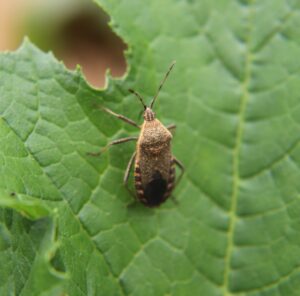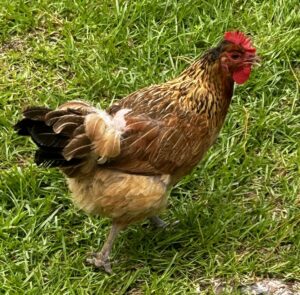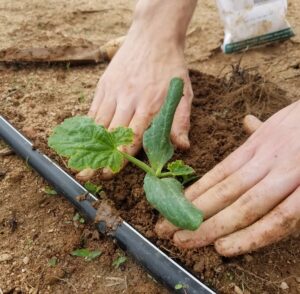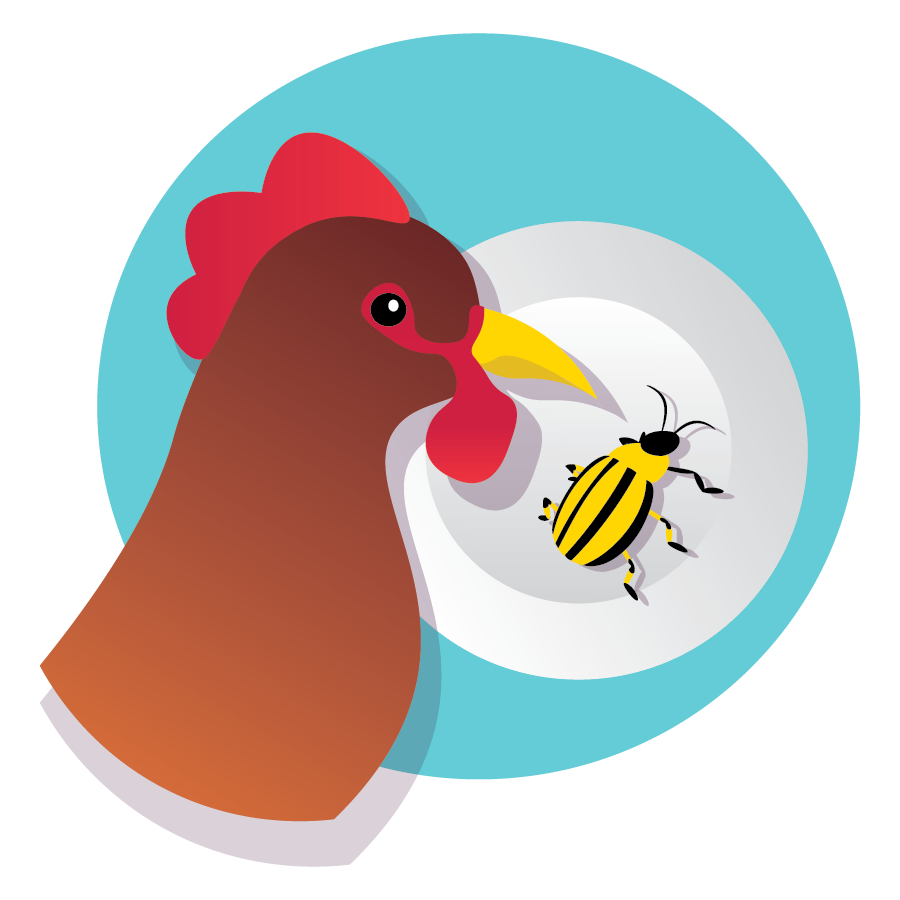Our goal is to better understand the ecosystem services pastured chickens and integrated crop-livestock systems can provide growers. We conduct research on real, working farms in the Southeast United States to gather samples and talk to growers. Most of the farms we visit use organic or regenerative practices to raise livestock and grow crops.
Learn more about our three research objectives below:

Objective 1: Pest Control
Chickens are generalist foragers, meaning that they eat a large variety of arthropods (insects and spiders) and plants. Chickens could benefit crop production by eating pest insects and weeds (1). However, chickens could also be indirectly boosting pest populations by eating natural enemies like ground beetles and spiders (2). We aim to sequence DNA from chicken poop to describe chicken diets. We will also measure arthropod and weed populations with and without chickens to quantify chicken impacts on pests.

Objective 2: Food Safety
Chickens can carry bacteria harmful to humans in their guts like Salmonella and Campylobacter. These bacteria can be transmitted from chicken to egg, or from chicken to crop on the same farm (3). We aim to quantify Salmonella and Campylobacter in chicken flocks to assess food safety risks. We will also sequence bacteria to determine the source and transmission routes to farms, helping growers prevent bacterial colonization of their flocks.

Objective 3: Soil Health
Chickens can benefit soil health by defecating and grazing, increasing organic matter, water retention, and soil organic carbon (4-5). Nutrients from chicken activity can also indirectly benefit plants by increasing the biodiversity of soil communities (6). We aim to measure soil properties and microbial communities in areas with and without chickens to quantify the impact of chicken activity on the soil.
References
- Sun, T, Z Liu, and R Long. 2014. Persistence of foraging chickens on grasshopper populations: A case study in Northwest China. Biocontrol Science and Technology 24:1206-1208.
- Clark, MS. 1996. An evaluation of domestic chickens and geese as biological control agents for insect pests and weeds (Publication No. 9706465) [Doctoral dissertation, Michigan State University]. ProQuest Dissertations Publishing.
- Golden, CE, and A Mishra. 2020. Prevalence of Salmonella and Campylobacter spp. in alternative and conventionally produced chicken in the United States: A systematic review and meta-analysis. Journal of Food Protection 83:1181-1197.
- Gai, X, Z Zhong, X Zhang, F Bian, and C Yang. 2021. Effects of chicken farming on soil organic carbon fractions and fungal communities in a Lei bamboo (Phyllostachys praecox) forest in subtropical China. Forest Ecology and Management 479:118603.
- Xu, H, H Su, B Su, X Han, DK Biswas, and Y Li. 2014. Restoring the degraded grassland and improving sustainability of grassland ecosystem through chicken farming: a case study in northern China. Agriculture, Ecosystem & Environment 186:115-123.
- Lazcano, C, M Gómez-Brandón, P Revilla and J Domínguez. 2013. Short-term effects of organi and inorganic fertilizers on soil microbial community structure and function. Biology and Fertility of Soils 49:723–733.
